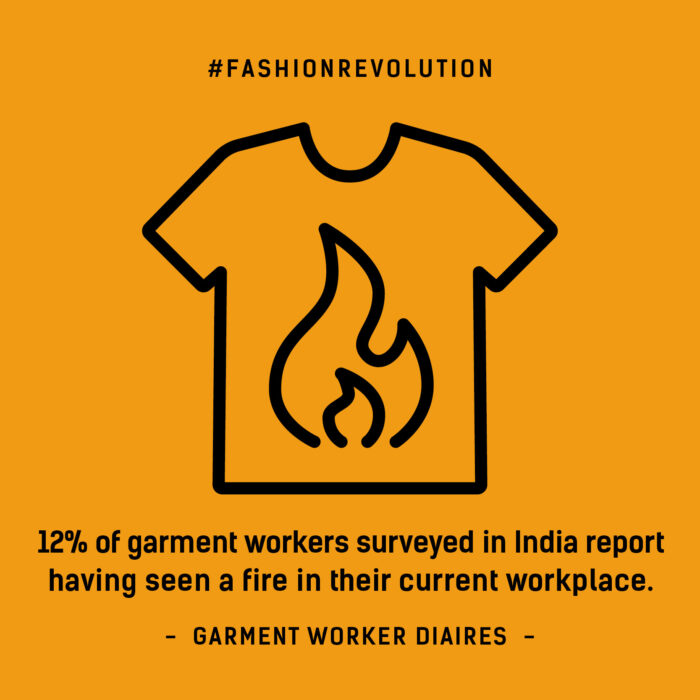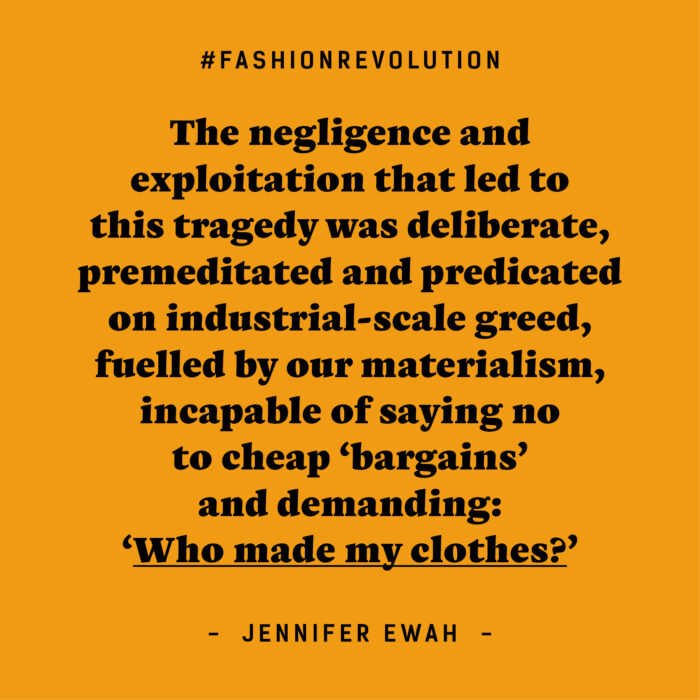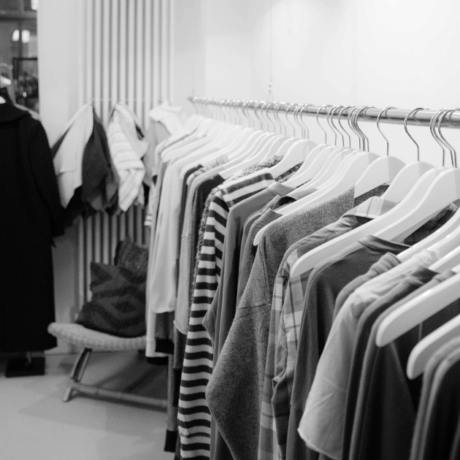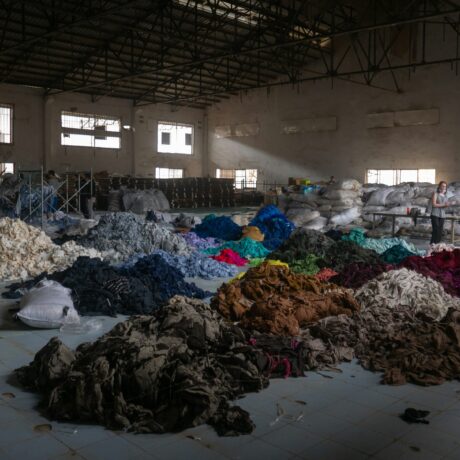Op-ed: Delhi factory fire fuelled by our materialism
On Sunday, 8 December a fire occurred at a factory building in the Anaj Mandi area of Delhi, India. At least 43 people died and over 50 were injured.
The fire started in a workshop that produced school bags. The fire services received a call for help around 5:22 a.m. IST.
The first responders of the Delhi Fire Service reached the location within five minutes, but their entry to the building was prevented by the intensity of the fire and blockages to the entry points. The scene was surely horrific. Gas cutters had to be employed to remove the iron grills, as though the workers inside were in a cage.
According to the police, most of the people who died were labourers who had been sleeping inside the factory. Too often in the clothing supply chain, garment workers are made to stay and work overtime hours when production targets have not been met, as may have been the case for this school bag making factory. Then, when the work is done, workers are often made to sleep on the factory floors as it isn’t safe for them to journey home in the dark. As well, with the youngest victim reported to be aged 13, this loss of life also touches on the tragic issue of child labour.
Doctors stated that the deaths were due to asphyxiation caused by smoke inhalation and carbon monoxide poisoning. A preliminary investigation and eye-witness claims have blamed an electrical short circuit.

This tragedy intersects the systemic issues of migrant labour, building safety and regulation, as the factory is thought to have been operating illegally, with multiple unsecure wires ready to catch ablaze. According to Microfinance Opportunities’ Garment Worker Diaries, 12% of garment factory workers in India reported having seen at least one fire in their current workplace.
This tragedy is beyond horrific and heart breaking, yet it is part of a wider systemic issue of injustice and oppression that is disgustingly commonplace in developing (and developed) economies where “cheap” labour is exploited prevalently as part of a fashion system under increasingly insatiable retailer pressure, for lower and lower labour costs. A fashion system that we are the beneficiaries of.
This and countless other disasters like Rana Plaza, are not a reflection of overpopulation, or resource scarcity, or the reality of macro-economics born from the existence of fashion capitalism. There is no reason in conscience why these innocent people died, other than to save the financial costs of the fundamental human right of keeping them safe in a factory that should have provided them with dignified employment, in safe working conditions, being paid fairly, while not pressured or coerced to sleep there to meet production targets. Their lives were degraded and cheapened, ultimately to the point of death…and for what?
School bags. For our children. The youngest of the victims, a 13 year old, was a child, who should have been in school. Cause and effect is a universal rule. The sickening cause that perpetuates the effect of this fashion system is that there continues to be rabid consumer desire for rock-bottom cheap clothes; and when we get that bargain of an item that is often valueless in our own minds, destined for landfill, produced at the cost of the blood, sweat and tears of a fellow human being, we do not stop to ask: who made this? Why is it so cheap? What kind of human existence does the person who made it possess?
Labour Behind the Label puts it starkly:
“Systemic human rights abuses pervade the global garment industry, from poverty pay, long working hours and denial of trade union rights to significant risks to workers’ health and safety through unsafe buildings, heat, lack of ventilation, no access to clean drinking water and restricted access to the bathroom, and use of dangerous chemicals. Violence and abuse are commonplace, and workers are often attacked or even killed for joining a union and demanding better working conditions.
Long hours, often 10-14 hours a day plus forced overtime, of repetitive work often leads to injuries which go undiagnosed. Workers who cannot keep up with production due to pain or discomfort are fired. When pressure is on to fulfil large orders workers can be forced to work 18 hours a day. If workers refuse overtime there have been reports of them being fined or even fired.
Many factories have no emergency exits or they lock the doors and bar the windows to deter theft, causing many people to die when a factory fire occurs. For example, the Ali Enterprises fire in Pakistan, 2012, where 254 people died and over 55 more were seriously injured as workers remained trapped in a burning building.
Factories are being set up cheaply in buildings not designed to house heavy machinery, leading to building collapses and worker deaths.
The garment industry operates under a veil of secrecy with an almost total lack of transparency enabling ongoing exploitation of workers.”
We cannot relegate this kind of disaster and horrifying loss of life to some form of aberration or isolated illegality on the part of factory owners, municipal authorities or even the Indian government. The negligence and exploitation that led to this tragedy was deliberate, premeditated and predicated on industrial-scale greed, fuelled by our materialism, because the business as usual priority is for us to seemingly be incapable of saying no to cheap “bargains” and demanding “Who made my clothes?”. Make no mistake, we are complicit in this constant tragic loss of life when we do not speak up against a fashion value chain that allows this. Our choices may not, in linear terms, directly force people into poverty and the hideous choice of working in slavery or near-slavery conditions (facing starvation in the alternative) but if we do not champion a fairer system, we are culpable. We, the lucky few, who are purchasing rather than making the garments, are beneficiaries of a fashion system of injustice that is fuelling these disasters.

This is about ethics being trumped by systemic monetary greed; on the part of factory operators exploiting workers; some even being children, on the part of retailers and buyers, demanding lower costs, knowing with crystal clarity that their demands can only be met by child and sweat shop labour, and finally the buck stops with us consumers – and our addiction to unquestioning consumerism for the sake of the “cheap” and the “new”. Our desire for meaningless “stuff” is fuelling disasters and death, and an epidemic of misery for those working in the supply chain. Silently, prevalently, systemically, our consumption habits are doing this. Yes, we the erstwhile rich (living and shopping in relative economic comfort in this World) can claim to not know the ills of the system, or to blame a few brands caught “red-handed”, instead of being continuously vigilant and embracing ethical, sustainable and circular ways of shopping…whether you are a consumer, brand or corporate – your actions count; we have to end the greed that allows the fashion value chain to dehumanise even children by either boycotting, lobbying or just by demanding transparency from brands.
This Delhi tragedy was no “one-off”. Even if this disaster was unprecedented it would be utterly unacceptable. After Rana Plaza, we beg you – advocate, use your voice as a consumer and a stakeholder in the fashion system to change this gross, unconscionable system of injustice.
Are we prepared to accept, that our fashion consumption habits and desire for “cheap” stuff should be allowed (in causation terms) to kill even children?
***
Note: Jennifer Ewah is a fashion activist and social entrepreneur. She is the founder of Eden Diodati, beaded in Rwanda by triumphant women survivors of artisan excellence.
Cover image is from Sky News.








